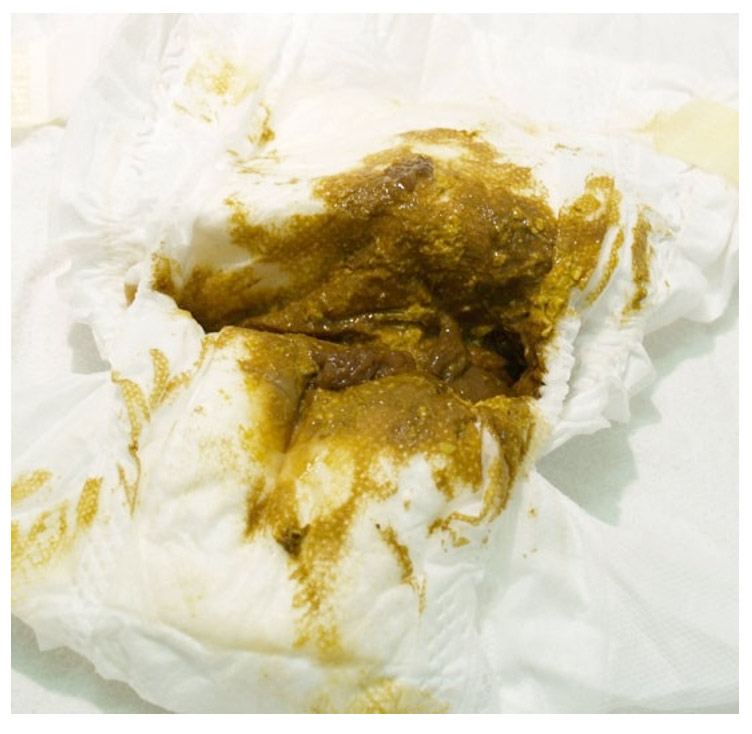Context
- Normal neonatal stools
- Neonatal constipation and dyschezia
- Urinary urate crystals
- Vaginal bleeding and leukorrhoea

Basic science and pathophysiology
Normal neonatal stools
- In general there is no such thing as a normal bowel habit in a neonate!
- It is completely normal to produce stool multiple times a day or only once a week especially if breast-fed.
- However, knowledge of how these stools change over the first week of life can provide useful diagnostic information:
- Meconium
- Transitional stool
- Yellow stool
a) Meconium
- Dark (almost black), sticky and odourless
- Present in both breast and bottle-fed infants
- Should first be passed within the first 48 hours of life
- Otherwise consider Hirshsprungs disease or meconium plug (may be associated with cystic fibrosis)
- Should convert to transitional stools by day four of life
- Otherwise inadequate feeding should be considered

b) Transitional stools
- Should appear from day four of life if adequate feeding
- Combination of dark coloured meconium with that of yellow stools characteristic of exclusive milk feeds

c) Yellow stools
- Appear by day five in established breast-fed infants
- Typically described as bright yellow and seedy
- The typical consistency has significant liquid stool within the nappy with solid material on top and is incorrectly reported as diarrhoea by parents.
- In bottle fed babies the colour of established stool can vary between yellow, brown or green and has a thicker consistency similar to peanut butter.

Neonatal constipation and dyschezia
- It is completely normal for breast-fed infants to defaecate only once a week.
- Difficulty in passing stools is a common problem in neonates but rarely is it constipation.
- Healthy infants (<6 months) can strain and become distressed but subsequently pass soft stool. This is a normal part of development as the child learns to coordinate increasing intra-abdominal pressure with relaxation of the pelvic floor. This is called dyschezia and will improve spontaneously overtime.
- Only if the stool is hard is it true constipation.
- True constipation in neonates is more suggestive of an underlying medical condition and these patients should be referred.
- The following should be considered:
- Hirschsprungs disease
- Congenital anorectal malformations
- Spinal cord abnormalities
- Meconium ileus (cystic fibrosis)
- Metabolic causes: hypothyroidism, hypercalcaemia
Urinary urate crystals
-
- Inability to concentrate and acidify urine within the neonatal period facilitates a large urinary uric acid load41.
- The uric acid forms characteristic pink-orange deposits within the nappy of an otherwise well child.
- It is especially common within the first week of life.
- However, they can appear anytime within the first year as renal tubular function gradually improves.
- No investigation or treatment is required.

Vaginal bleeding and leukorrhoea
- High levels of maternal oestrogens within the new-born can lead to a physiological white-yellow discharge called leukorrhoea.
- As these levels fall (typically around day three) it is not uncommon for small withdrawal bleeds to occur.
- Both phenomenon resolve spontaneously by the first week of life as maternal hormones are metabolised.
- Large amounts of blood and bleeding after one week of age is atypical and alternative diagnoses such as coagulopathy and non-accidental injury should be considered.

Image caption: Oestrogen withdrawal bleed
